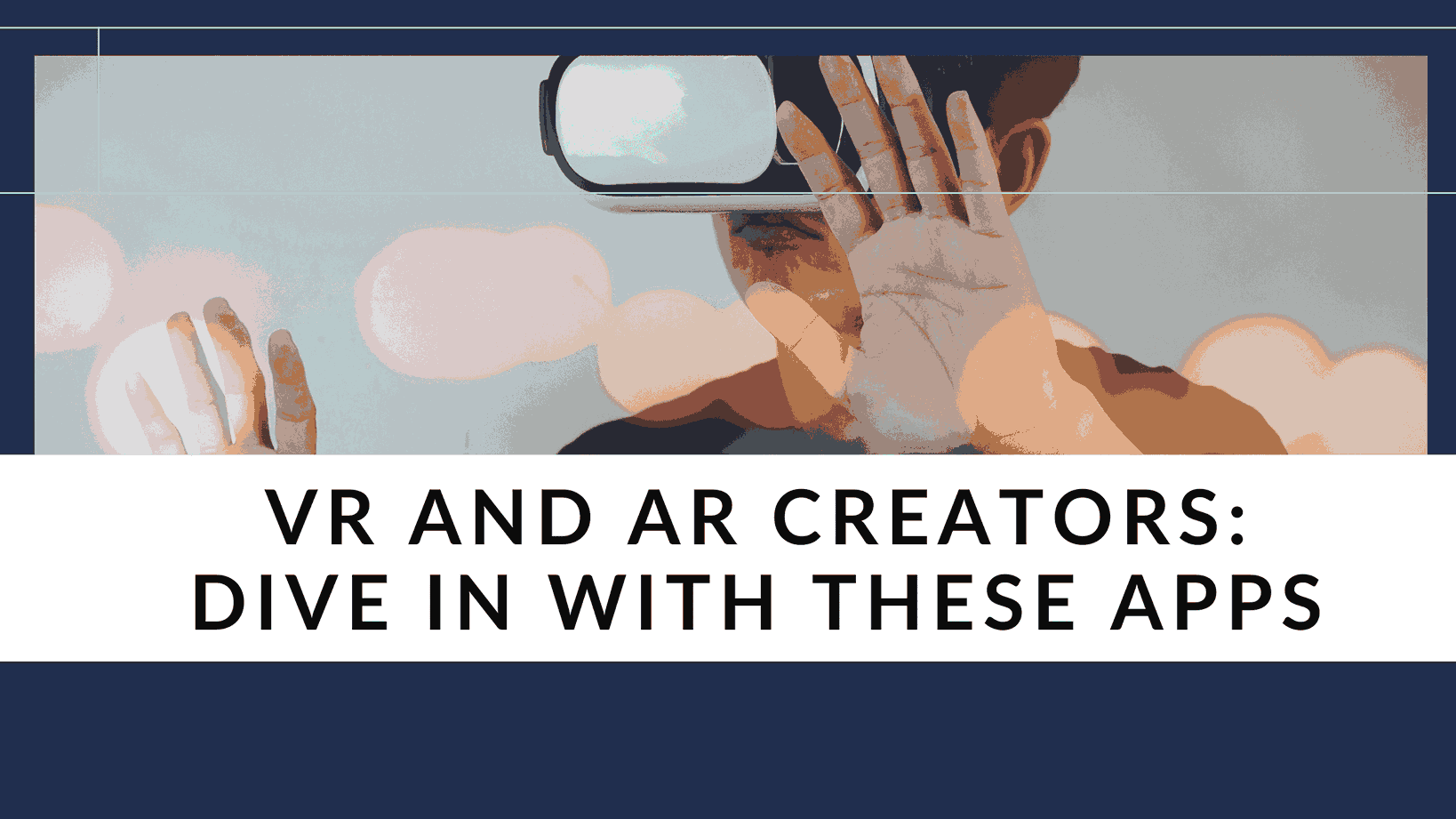VR and AR Creators: Dive in with These Apps


VR and AR Creators: Dive in with These Apps
The global VR/AR market is on an exponential rise, with a projected value of $297 billion by 2024. This impressive growth isn’t limited to entertainment; businesses are increasingly adopting augmented and virtual reality as innovative communication tools to engage with consumers. From virtual car showrooms to visualizing furniture in your living room, AR and VR are reshaping the way we interact with the world.
As the demand for AR/VR experiences continues to surge, the tools and platforms for creating these immersive environments are rapidly evolving. In this article, we’ll explore the top 5 AR/VR apps that every designer should know about.
1. Unreal Engine: Crafting Real-time 3D Magic
Unreal Engine is a leading real-time 3D creation tool that offers a comprehensive suite for game design, simulations, and visualizations. What sets Unreal Engine apart are its versatile deployment options, including Hololens, ARCore, and Oculus. It delivers superior quality and performance, making it a favorite across various platforms, from Windows to iOS and Android. From cinema-level special effects to architectural visualization and gaming, Unreal Engine is a versatile choice for VR and AR development.
Moreover, Unreal Engine is known for its regular updates that keep up with the fast-evolving world of extended reality. While it offers free access, a royalty fee applies for successful games that earn over a million dollars. Some renowned products developed using Unreal Engine include Fortnite, PES 2020, Lineage 2: Revolution, Heroes Reborn: Enigma, and PUBG Mobile.
2. Unity: Creating Immersive Experiences
Unity is a powerhouse in the world of 2D and 3D game design, as well as 3D animation for various platforms, including VR and AR. Unity’s Universal Render Pipeline ensures high-performance VR games with stunning visuals. It also promotes team collaboration, essential for VR development.
Unity offers cost-effective plans, with free access for students and individual users, and premium plans starting at €1,877/year. Some noteworthy applications developed with Unity include “Surgical Anatomy of the Liver,” “BitGym,” and the “Louvre-lens mobile tour app.”
3. ARKit: Apple’s Augmented Reality Framework
ARKit is Apple’s framework designed for crafting augmented reality experiences on iOS devices. It utilizes camera sensors, the gyroscope, and accelerometer data to create augmented reality visualizations. ARKit excels at recognizing flat horizontal surfaces and employs Visual Inertial Odometry (VIO) to position 3D objects in the real world.
Apple consistently enhances its AR offerings, and ARKit received noteworthy updates in 2022, including 4K video support, camera settings enhancements, advanced motion recognition, enhanced location anchors, and multiplayer capabilities. All iPhones and iPads running iOS 11 or later support ARKit apps, and it’s accessible free of charge for those enrolled in the Developer Program.
4. ARCore: Google’s Augmented Reality Platform
ARCore is Google’s platform for AR product development, and it’s compatible with both Android and iOS devices. ARCore tracks motion and observes objects using a device’s camera and inertial sensors, allowing it to recognize surfaces and objects accurately. Notably, it doesn’t require any extra equipment, just mainstream Android devices like smartphones and tablets.
Subscription plans for ARCore start at $42/month, but platform usage remains free until app deployment. Prominent corporations such as Accenture, Samsung Electronics Co, and Siemens AG frequently employ ARCore.
5. Wikitude: Crafting AR Prototypes with Ease
Wikitude is a versatile app tailored for crafting AR prototypes for iOS, Android, and Windows mobile devices, as well as select HUDs (helmets). Its comprehensive features include 3D model visualization, geo-oriented AR, image recognition and tracking, cloud recognition, SLAM (Simultaneous Localization and Mapping) technology, and support for smart glasses.
Subscriptions with yearly auto-renewal start at €2,490/year. Trusted by businesses, agencies, and developers across over 180 nations, Wikitude powers over 1 billion app installations. Renowned brands like Jack Daniel’s, Marvel, The Washington Post, Nissan, Porsche, Lufthansa Technik, and Walmart have founded their AR applications on Wikitude.
In conclusion, the AR/VR industry is booming, and these top 5 apps provide designers with the tools they need to create stunning and immersive experiences. Whether you’re into gaming, architecture, or mobile apps, there’s an AR/VR solution that fits your needs. So, dive into the world of augmented and virtual reality, and bring your creative visions to life with these incredible tools.
If you’re a VR and AR creator looking to streamline your workflow and manage your SaaS stack more efficiently, Subscribed.FYI is the perfect platform for you. With its mission to empower freelancers and small teams in navigating the complexities of SaaS tools and expenses, Subscribed.FYI offers a centralized solution to find, track, and manage all your subscriptions in one place. Additionally, by signing up for free, you can unlock member-only deals on 100+ SaaS tools, saving you significant amounts of money each year. This platform is suitable for all professional backgrounds, providing comprehensive insights, pricing comparisons, and user reviews to help you make informed decisions about the best SaaS tools for your specific requirements.
If you’re ready to dive into the world of VR and AR creation, don’t miss out on the opportunity to take control of your expenses and access exclusive deals through Subscribed.FYI. Sign up today and start enjoying the perks of streamlined subscription management and significant savings on essential SaaS tools.
For more information on the AR/VR landscape, check out these informative articles:
- Virtual and Augmented Reality in Mobile Marketing
- Unlocking Immersive User Experiences through AR/VR Integration
- The Top 5 AR/VR Apps Designers Should Know About
- Best AR and VR Apps and Games for iOS and Android
- Subscribed.FYI
- Subscribed.FYI Deals





